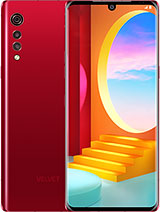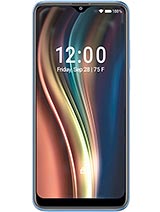Visible Speed Test Results From a Real Customer | How Fast Is It? By Michael Saves
Hey, it's Michael welcome, and you know a lot of people may think that a cheap cell phone plan means you're. Going to have really slow data speeds, but is there any truth to that? I'm going to try to answer that question because I've got a bunch of speed test results from visible. I've been a customer for more than a year, and I'm going to break down what visible says about its data speeds and then show you the results that I've gathered over my year, plus as a customer. Let's get to it now there are going to be two parts to this video first I'll go over what visible says and then my experience. But as I go through what visible says, I'm going to run an additional speed test. This is the speed test app, it is free.
Anyone can download it. I'm going to click go right now and as I talk about what visible says, this will be running I'll share the results of this test and many more coming up later in this video. I can totally understand why people are confused about visible data speeds, because when the service first launched there were a 5 megabits per second speed cap and right now on visible's website. Here's what it says: unlimited data messages and minutes on Verizon's 4g, LTE network plus, for a limited time, we've removed our speed cap free for as long as you remain a member. Now that message about the speed cap being removed has been there for more than a year, because when I joined the service there wasn't a speed cap anymore.
Next, I moved to the plan page and found a couple. Other pieces of fine print related to data speeds. First, in times of traffic, your data may be temporarily slower than other traffic and mobile hotspot speeds are capped at five megabits per second, so regular cellular data. There is no speed cap, but when you are connected to mobile hotspot, five megabits per second that still exists so far, no specifics, but if you hunt around visible's website a little more you'll find this visible. Expects members on Verizon's, 4g LTE network will experience typical, download speeds of 5 to 12 megabits per second later on.
It says: upload speeds are typically 2 to 5 megabits per second, and then it goes into latency, which it says should be 150 milliseconds, now download speeds of 5 to 12 megabits per second that doesn't sound all that impressive, but elsewhere on visible's website there is the 5g page, and it says 200 megabits per second is coming with 5g. So I know I just threw a lot of numbers out there, but I wanted to do that. So we can have a baseline to compare what visible says against my experience as a customer over the past year. So now we're going to get into that. As I mentioned at the top of this video I've been using the speed test app to track visible data speeds for the past year and the app is free, I'll link to it in the description below.
So you can try it out for yourself and when you run one of these speed tests, you're going to get three pieces of information, the download speed, the upload speed and the ping I'll more on that in just a second but remember, I did a speed test at the top of this video and I have the results right here. The download speed, 23 megabits per second, the upload speed higher at 27.3 megabits per second and finally, the ping 152 milliseconds. But what does all this mean? Here's the way I see it, download speed is what matters most when it comes to streaming: video and music surfing the web and using most of the apps on your phone now upload speed becomes important if you have to send large files over email using your phone and ping measures. The responsiveness of your connection- this is also referred to as latency those who play video games on their phone. They're going to want a faster ping, but for a lot of us, this doesn't really matter as much.
Over the past month, I conducted 25 speed tests to get a better snapshot of visible performance. These were all conducted at my home location in south Florida. I have all the results of these speed tests on my website, but here's a look at the averages for download speed, 29 megabits per second upload speed, 26.1 megabits per second and ping 120 milliseconds. So let's talk about that for a moment. First, the download speed 29 megabits per second- that is a lot higher than what visible says on its website.5 to 12 megabits per second upload speed, remember visible, says just two to five megabits per second mine 26.1 is the average of those 25 speed tests. Finally, the ping and the average was 120 milliseconds that is slightly faster than the 150 mentioned on visible's website, but still not great.
If you're an online gamer, a lot of gamers are going to want that number to be 60 or less for a really fast ping. We've had a lot of talk about numbers, but I want to take numbers out of it for a second and just talk to you about my experience using the visible service. If you are anything like me and use your phone primarily to make phone calls, send text messages, use the internet to surf the web scroll Instagram watch YouTube. Videos visible, should be fine for your needs in my year, plus with visible I've, never had a video freeze or buffer, and I'm a pretty heavy data user. In fact, I've got right now on my phone pulled up my YouTube page I'll pull up a recent video.
The ad is playing automatically no freezing, no buffering I'll skip the ad there. It goes no issues with the streaming whatsoever, and that has been my experience with visible another real life example. Like a lot of you when the pandemic hit, I started going for walks because that was all there was to do and, as I went on these walks, I would have either sling TV or Hulu live running, and I'd have the videos to watch as I walked and never had any issues. Streaming live TV using the visible cellular data connection. So, although visible status speeds have worked for me and my fairly I'd say, typical data needs.
It's not going to be for everyone, and it all comes down to prioritization back in 2019. I did a side by side comparison of Verizon, postpaid and visible. The speed test definitely showed that Verizon post paid was faster and that should be expected because visible is telling you we're going to slow you down when there is network congestion. Those Verizon post paid customers are going to get priority. For me, this isn't really that big of a deal, because all those people on Verizon post paid are paying a lot more for their cell phone service than I am with visible, I'm just paying 25 a month with party pay.
Of course, your data speeds are going to vary depending on where you live, work and travel. For many years I've been on Verizon's network, most recently with low-cost carriers, Xfinity mobile and now with visible I've, always known that Verizon is my go-to network. It's just the one that I prefer based on where I live now for you that may be a t or T-Mobile's network. So I would suggest that you look at low-cost cell phone service providers that use those towers. Every provider has a coverage map on its website.
It'll show you the coverage in your area and that can help you make an informed decision to decide whether it's worth signing up for that service or not. The bottom line is this yeah these speed test results from the app sure they're interesting, but what matters more than the number from the speed test app is the number on your cell phone bill at least that's the way that I see it. You've got a choice to make. Do you want a cheaper cell phone bill or do you want the fastest data speeds? I'm willing to take the lower data speeds in return for a lower cell phone bill? So I'm going to hear from you now run a speed test using the speed test app and then share your results and the carrier that you have in the comments below. Let me know what type of data speeds that you get with your cell phone service provider.
If you got something out of today's video, please like it and consider subscribing to my channel, I talk about cheap phone plans, streaming TV credit cards and money tips, I'm looking out for your money on this channel. Thank you for watching, and I'll see you next time right here. Take care.
Source : Michael Saves


























